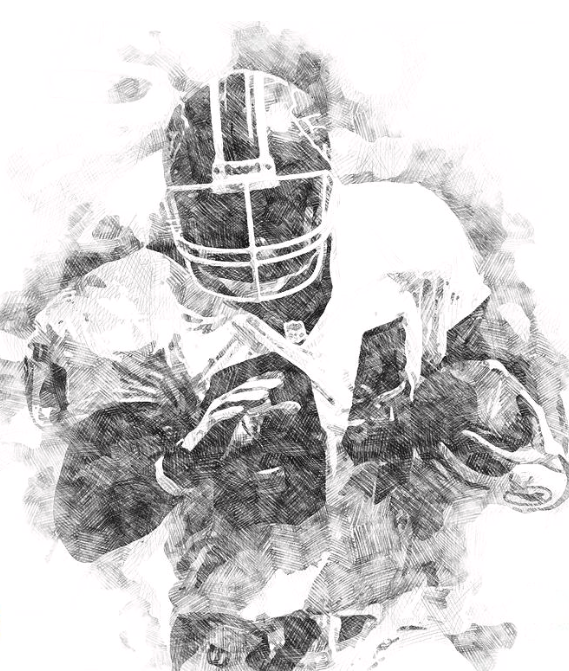Note from Scott: Lately, I have written a lot about equity and access (in music education), not just for kids but also for teachers. This is another such thought piece.
I understand complex issues require complex solutions, and this (or any other) newsletter will not solve anything. But, it might give you something to noodle on for the rest of the day.
This is the January free edition for my e-zine
Last night, nearly 10% of our nation's population set aside everything else to focus on one thing - college football. An estimated 35 million people tuned in to watch Michigan Wolverines defeat the Washington Huskies - a record, doubling last year's audience of 17.2 million.
For decades, few things unite Americans as consistently and completely as football — the autumnal obsession of Friday nights, the ritualistic centerpiece of college-town Saturdays, the communal Sunday religion of a staggering percentage of the populace. In American culture, the game stands virtually alone in how its appeal cuts across demographic lines.
However, when it comes to actually playing tackle football — and risking the physical toll of a sport linked to brain damage — there are broad divisions marked by politics, economics, and race.
In a recent expose in the Washington Post, authors Dave Sheinin and Emily Giambalvo examined the state of our nation's sport and how it is changing. The Post analyzed decades of high school and college sports participation data and state-by-state demographic trends, interviewed hundreds of coaches, students, and parents, and conducted a nationwide survey about attitudes toward kids' participation in the sport.
What did they find?
"While participation is falling almost everywhere," the Post found, "boys in the poorest states continue to play high school tackle football at higher rates than those in wealthier areas. And while precise data about football's racial makeup is hard to come by, the demographics appear to be gradually shifting faster than national demographic changes."
In short, people from underserved (SES: socio-economic status) and underrepresented (DEI: diversity, equity, & inclusivity) communities participate at higher rates than their counterparts.
The question many organizations are asking is, "How many kids are playing?" This study begs us to ask the next and perhaps more important question, "Who is playing? And why?"
And, in case you didn't get it - I'm no longer talking about football.
"Who is playing? And why?"
In the past decade, rightfully so, we have seen a growing spotlight on SES and DEI issues for music teachers and their students. In my experience, we tend to look at the overall school, not program demographics.
Let me elaborate.
Many of you know I was a high school band director for sixteen years - all in Title 1 schools. I am FAR from being an expert, but I am also not short on experience. I started my classroom career watching the riots in East Los Angeles and ended my career in the infancy of school-based shootings.
One day, to ask for a bigger budget, I broke down my band in every conceivable way (instrument, class size, year, gender, ethnicity, etc.) When I reviewed the numbers, I was shocked to see that while my school was roughly 34% Hispanic, 33% African-American, and 33% white. In contrast, my ensembles were 45% Hispanic, 47% white, and only 7% African-American.
My program did not represent my school community. I was operating under the false flag of inclusivity.
Like football, I focused on how many students were playing (24% of my high school was in the band) rather than on who they were.
Yes, I taught in a very balanced (culturally and economically) school community, but my ensembles were under-serving the African-American community. And, if I were being honest, despite having no numbers to prove it, I suspected that the median household income for my band members exceeded that of the school average. Looking at my upper SES school colleagues, I wondered if they had the same imbalances, but in reverse. Did they have students they were not seeing?
Hang with me for a second, and let me explain.
When looking for barriers (and opportunities) to access and inclusivity, perhaps we should be "school-blind" and "student-centered." In other words, we as a profession can't solely focus on specific schools, zip codes, or communities. My experience tells me that regardless of where and what you teach, all schools have lower SES students and under-represented communities. The numbers and percentages may differ from school to school, but issues related to poverty, equality, and other barriers to participation in music exist in every school.
Don't believe me? Answer the following questions. In your school community, do you have:
Apartments in your attendance zone?
Single-parent households?
Parents who lost a job recently?
Households that struggle with inflation?
First-generation Americans?
Mono-lingual parents?
Households without a college degree?
Families that make payments incrementally?
Students who have to wait to buy accessories?
Students who can't afford lessons?
Students who require jobs?
Students who take public transit to school?
Students who get free or reduced lunch?
Students who don't dress warm enough in the winter?
What about other barriers? Do you have:
Students who need a scholarship to go to college?
Students who need an AP class that conflicts with music?
An AVID or IB program that consumes their schedule?
Families that pressure their students to take "real" classes?
Counselors who push career pathways?
A district that requires a foreign language but does not see music as one?
I could go on, but you get my point.
Those are barriers and obstacles to inclusivity as well. Those problems are just as real to those students and their families.
Diversity, inclusivity, and access are not just Title 1 problems; they are all our problems. They exist in every community and every music program. They may even fool you. The impoverished might not be as poor as you think, the wealthy might not be as rich as you think, and (as I found out), your program might not be as diverse as you think.
The Washington Post article points out that for most high school football players, the sport is an opportunity to push themselves, grow, and be a part of a team or family. For those in need, football can be seen as that and more - a way out and up - a chance to change their lot and build a brighter future. And every team has both types of athletes.
That is where I believe music and football are the same.
On Friday nights, players of sport and players of sound share more than the same field - they share the same dreams, obstacles, and opportunities.
Something to think about. As I said, I don't have all the answers, but I do have some experience.
Have a great week!
Scott
p.s. Be Part of the Music just launched Grants, Growth & Gratitude 2024 - $10,000 in offerings designed to impact you and your students. Be sure check it out using the button below.
© SCOTT LANG LEADERSHIP 2023 - all rights reserved
BPOTM / SLL 505 S. CAMELLIA DRIVE Chandler, Arizona 85225 United States

